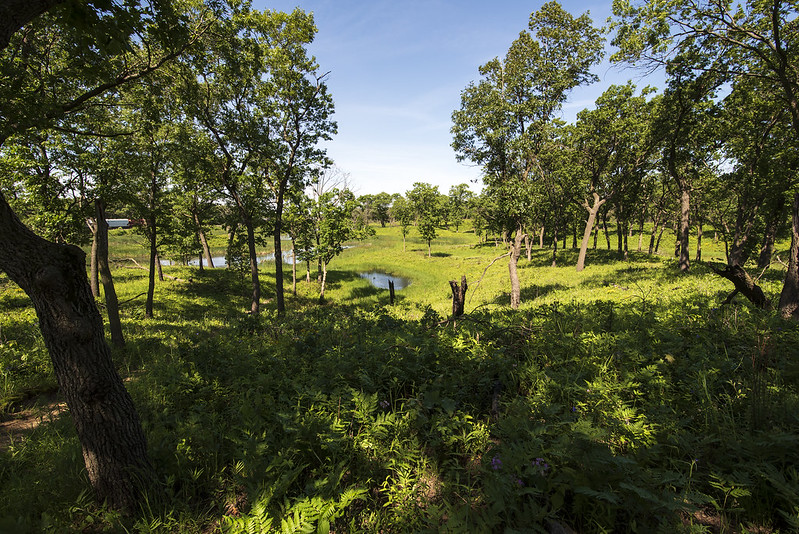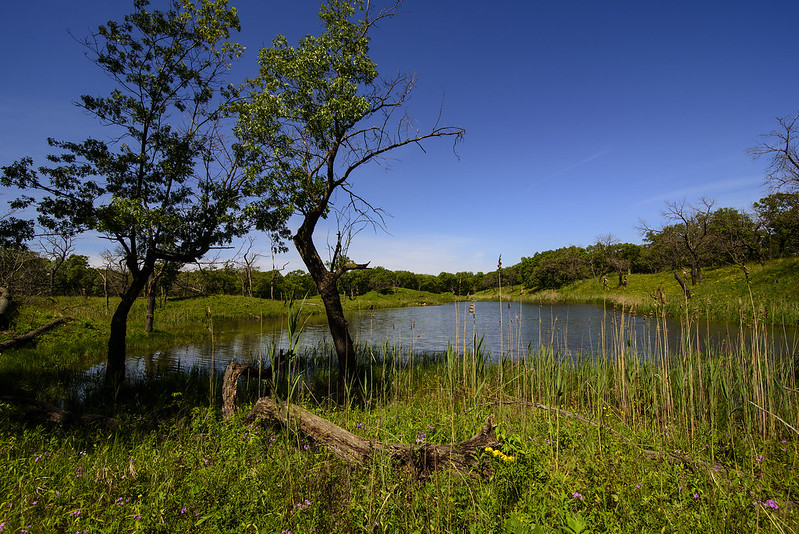
A late spring hike through Miller Woods offered a wide range of landscapes to explore. Located within the Indiana Dunes National Park, Miller Woods includes trails ranging from a quarter mile to over two miles one-way from the trail head to the beach. Hundreds of plant species can be viewed in this area of the park, lots of wildlife, and quite a few ponds and lakes.

The first half mile or so of the beach trail includes some peaceful ponds and lakes, some of which are rather large, and surrounded by oak savanna. Unlike most wooded areas in the Midwestern United States, these woods are as they naturally were before invasive plants were introduced to the area. Commonly, the invasive plants litter the floor of the forests, and create an impenetrable mass of vegetation; often, one can't even see through it.
In a natural state, the oak savanna has large spaces between oak trees with only short plants covering the ground. These areas have the best preserved oak savanna in northern Indiana. I imagine the rolling dunes dotted with small ponds discouraged farming and industry in this area, so the landscape never really changed much.

Recent rainy weather for the past two months has filled up many of the small lakes and ponds in the Miller Woods. However, only a few small areas of the trail were slightly flooded. These ponds pepper the landscape, we encountered one after another as we hiked the rolling land.
Located right next to the Lake Michigan shore, and at the boundary of the city of Gary, Indiana, this portion of the park is a huge surprise to anyone driving through the area.









